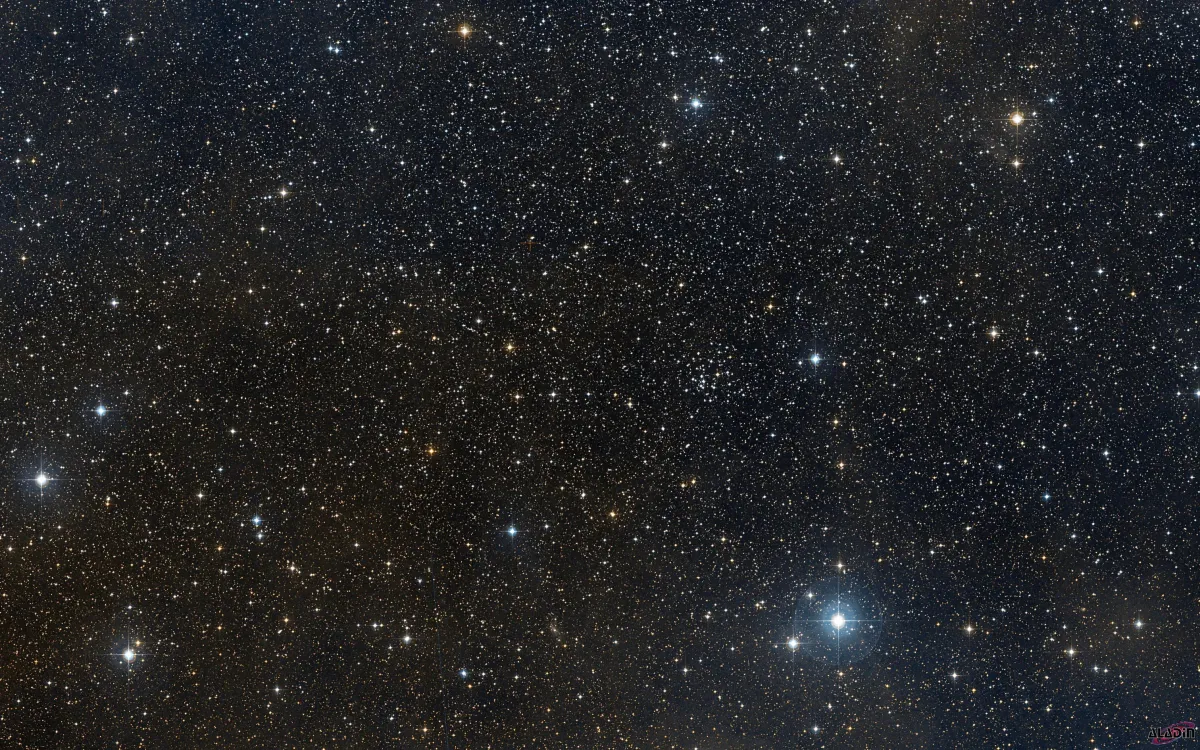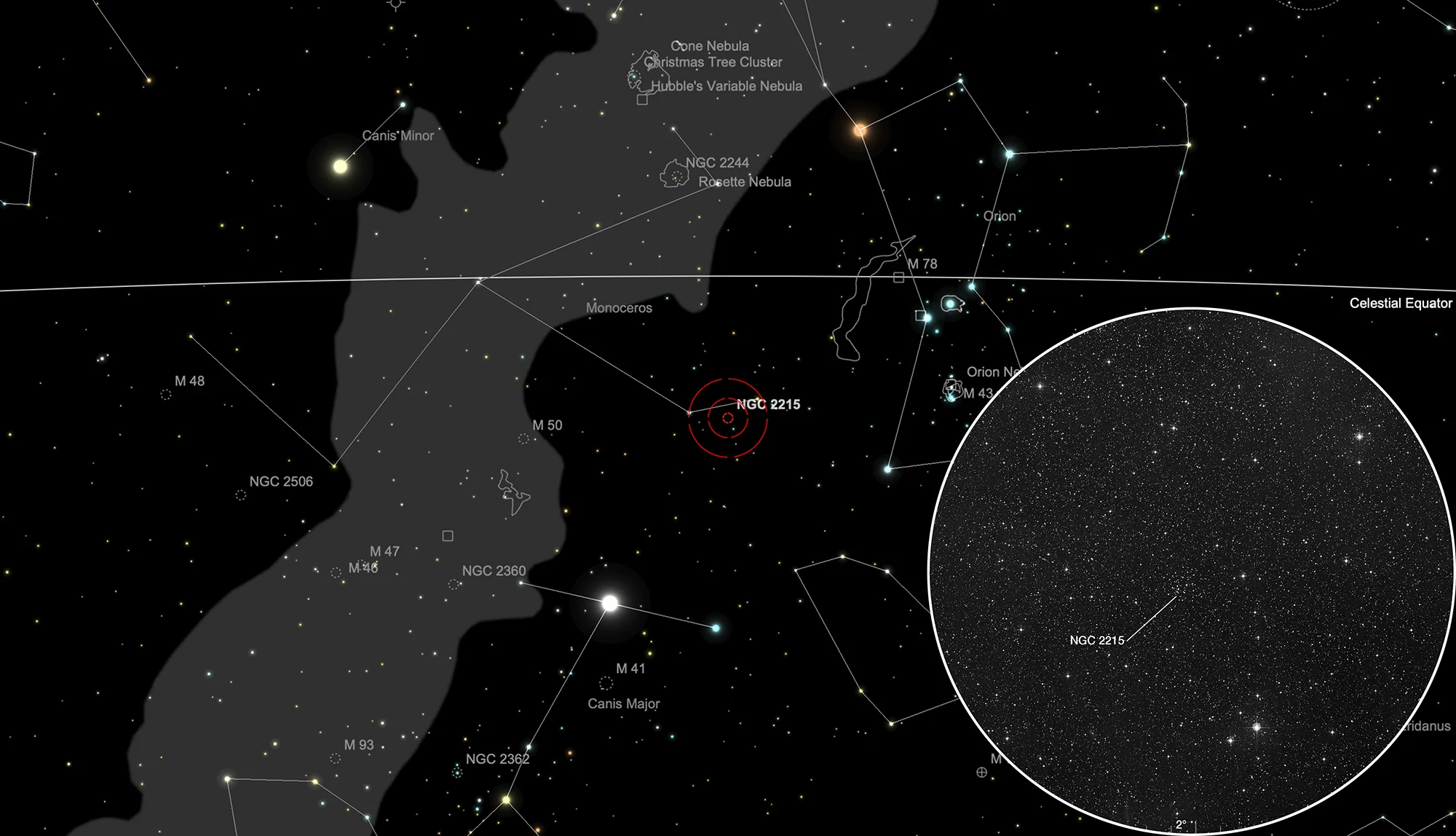Open Cluster NGC 2215

History
This open cluster was discovered on 1 November 1785 by German-British astronomer William Herschel. He used his 18.7-inch speculum reflector of 20 feet focal length, logged the cluster as VII 20 and noted: «A beautiful cluster of pretty compressed and equally scattered stars. 10 or 12' diameter.» [464]
John Herschel listed the cluster as h 386 and observed it twice: Sweep 16 (13 February 1826): «Coarse scattered cluster; irregularly round; stars 11...15 mag.» Sweep 318 (8 January 1831): «Very pretty scattered cluster 8...10' diameter; pretty rich; stars = 11...14 mag.» [466]
Physical Properties
| Designation | NGC 2215 |
| Type | OCL (II2p) |
| Right Ascension (J2000.0) | 06h 20m 49.2s |
| Declination (J2000.0) | -07° 17' 02" |
| Diameter | 8 arcmin |
| Visual magnitude | 8.4 mag |
| Metric Distance | 1.293 kpc |
| Dreyer Description | Cl, cL, pRi, pC, st 11…15 |
| Identification, Remarks | WH VII 20; h 386; GC 1399; OCL 550 |
Finder Chart
The open cluster NGC 2215 can be found in the constellation Monoceros. On 27 December it in opposition with the Sun and is therefore highest in the sky at local midnight.
